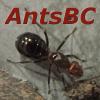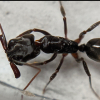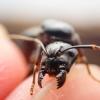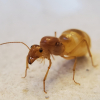So, I have never done this before, but I can give you some insight from a social parasite point of view. Like I said, I've never tried these things before, this is just me speculating what might work.
1) You've probably already heard about this, but you can introduce the queen in a test tube with some mesh around it. This is in order for the colony to adjust to the queen's scent. If you do this, I'd suggest to not to push the cotton ball very far into the test tube. You want to get the queen as close as possible to the workers. Based on what Bee keepers do, you'll probably want to do this for around three days.
2) Take a dead ant from the colony, cut up and smush up it's skin, mix it up into a liquid, and apply the liquid to the queen. You'll want to have more of the ant's skin than inside organs in the mixture. You could apply this to the queen with a paintbrush or something similar. This tactic would be emulating how social parasites deceive their hosts, although if the ant has been dead for a while, the queen will probably smell more like a dead worker than a member of the colony. Even still, if the workers think the queen is dead member of the colony, they're less likely to be aggressive. A freshly/newly killed ant would work the best for this.
3) Chill and introduce one worker at a time to the queen. This would be a good feeler to see how receptive the workers are, and the small sample size would make it easy for you to intervene if necessary.
4) Finally, if around 10 workers have accepted the queen, add the queen and the workers into the colonies' out world.
These are just some steps I would personally do based on my knowledge of social parasites, but unlike social parasites, this whole thing might not work if the queen does not want to be a member of the colony. It's probably best to introduce the queen as soon as possible to prevent her own colony scent from developing further than it already has. You could probably do more research into the subject on your own, but I hope this helps!
Good luck!
Edited by AntsBC, May 25 2020 - 7:54 PM.





















